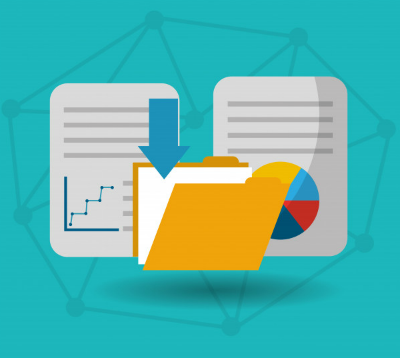AZBS > What is Data Backup
Data backup is the process of archiving primary data to a separate storage device with the intention of restoring it in case the primary data is lost. To achieve this, data is copied to a separate device every time it’s updated. The premise here is that the copied data and the primary data do not share the storage device, otherwise they would both get lost. For individual needs, storage devices such as flash disks, compact disks, and external hard disks can be used to store the backed up data. But still, this harbors risks of data loss in case of theft, natural disasters like fire, or human error.
Online data backup service is the ideal form of data back up in this era. Thanks to the advent of cloud storage, your data can be archived in a remote disk with maximum security from theft and natural disasters. It can also be accessed from anywhere in the world through the internet. So what is data backup? Simply put, it’s storing multiple copies of your data in different storage devices. But there are different types of data backup.

Types of data backup
-
- Full backupA full data backup involves copying all files in your database to a separate medium of storage. This is especially so during manual backups as it’s easier to do. The data is usually copied after a pre-set duration and each time, the files are copied again with the additional changes. However, this means a large consumption of storage space even when compressed. Furthermore, it may lead to disk wear and tear due to the recurring overwriting of data. Time taken in a full backup is substantial and may lead to massive downtime. This type of backup is best for individual backup needs with less data such as with your home computer. For large businesses, a full data backup can be done once after a period of time or after a major change in the business system data. Its main advantage is the ease of restoration as one only requires the file name to restore.
-
- Incremental backupIncremental backup involves only archiving data files that have changed or been added since the last backup. While this consumes less space than a full backup, it takes up more computational power to compare files in order to determine which ones have changed and which ones haven’t. In addition, restoring the data is harder as one has to go through all iterations and restore only the most recent update.
The best strategy is to do a full backup once in a while, then doing incremental backup until the next full backup to save on both storage space and computational power to reduce downtime.
- Incremental backupIncremental backup involves only archiving data files that have changed or been added since the last backup. While this consumes less space than a full backup, it takes up more computational power to compare files in order to determine which ones have changed and which ones haven’t. In addition, restoring the data is harder as one has to go through all iterations and restore only the most recent update.
-
- Differential backupA differential backup stores both the new file and the updated changes. This way, you’re able to restore the last full backup together with the most recent changes to the data. Unlike incremental backup which saves every iteration, differential backup only saves the most recent update. However, it still requires high computational power to compare the changes to determine whether there’s been a change to the changes in the backup.
- Virtual full backupVirtual full backup is better than the rest of the backup methods as it allows keeping a copy of the updated full backup. Basically, an initial full backup is performed once and updated every time the primary data changes. No iterations of the changes are stored. This gives the experience of a full back except without the high bandwidth and storage space required with the old school full backup. This is what most current online data backup services use to back up your data.
AZBS IT Consulting
At AZBS, we guarantee you quality data backup solutions, expert IT consultants, cybersecurity, 24/7 maintenance and monitoring, and data recovery for your business. With our experts by your side, you’re guaranteed comprehensive IT solutions to meet your business challenges, help you grow, and maximize profitability. Get the full suite of IT solutions and data backup services at a fraction of hiring an in-house IT team.


